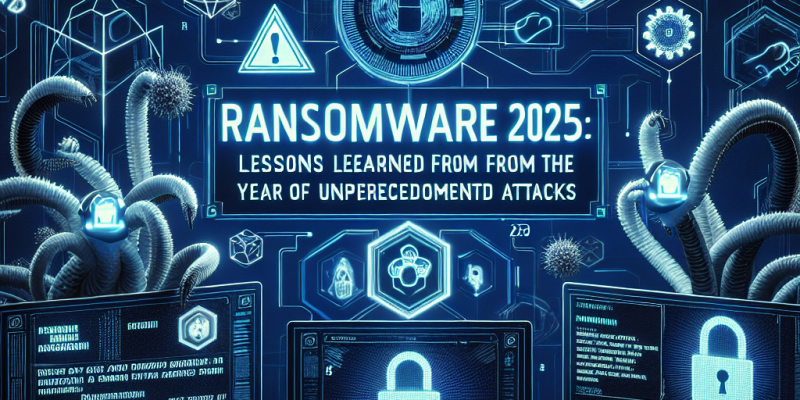Ransomware 2025: Lessons Learned from the Year of Unprecedented Attacks

As we look back on 2025, it’s clear that it was a pivotal year for cybersecurity. Ransomware attacks surged to new heights, affecting businesses, governments, and individuals worldwide. This article explores the key lessons learned from this unprecedented wave of attacks and how we can strengthen our defenses moving forward.
The Rise of Ransomware
In 2025, ransomware attacks became a major concern. Hackers exploited vulnerabilities in software, targeting both large corporations and small businesses. According to recent reports, the number of ransomware incidents increased by 150% compared to previous years. Many organizations faced severe consequences, such as loss of data, financial strain, and damage to their reputations.
Key Lessons Learned
1. The Importance of Data Backups
One of the most significant lessons from 2025 is the critical need for robust data backup systems. Many businesses that had effective backup strategies managed to recover their data without paying ransoms. Regularly backing up essential files and storing copies offline can mitigate the impact of a ransomware attack.
2. Employee Training is Crucial
Human error continues to be a major factor in ransomware attacks. Phishing emails and social engineering tactics have evolved, making it essential for employees to receive ongoing training. Companies that invested in regular cybersecurity awareness programs saw a significant reduction in successful attacks. Teaching employees to recognize suspicious emails and to practice safe browsing can make a real difference.
3. Investing in Advanced Security Measures
Organizations learned that investing in robust cybersecurity infrastructures is no longer optional. Technologies like machine learning and artificial intelligence (AI) can help detect unusual patterns and prevent attacks before they happen. Companies that adopted these measures were better equipped to handle potential threats.
4. Collaboration is Key
In 2025, many successful responses to ransomware came from collaboration between various sectors. Government agencies, cybersecurity firms, and private organizations worked together to share threat intelligence. This collective effort allowed for quicker responses to emerging threats and improved overall security for all parties involved.
5. Incident Response Plans are Essential
Having a detailed incident response plan proved essential during the wave of attacks. Organizations that were prepared had a clear course of action, which minimized damage and facilitated recovery. Regularly updating and testing these plans can ensure that teams know how to respond effectively if an attack occurs.
Looking Ahead: The Future of Cybersecurity
As we move into 2026 and beyond, it’s vital to apply the lessons learned from 2025. Cyber threats will continue to evolve, and staying ahead of these challenges requires dedication and adaptability. Organizations must prioritize cybersecurity, invest in training, and foster collaboration to better prepare for future attacks.
By remaining vigilant and proactive, we can create a safer digital environment for everyone. The lessons learned in 2025 should serve as a call to action for all of us to enhance our defenses against ransomware and other cyber threats. Together, we can face the future with greater confidence and resilience.














